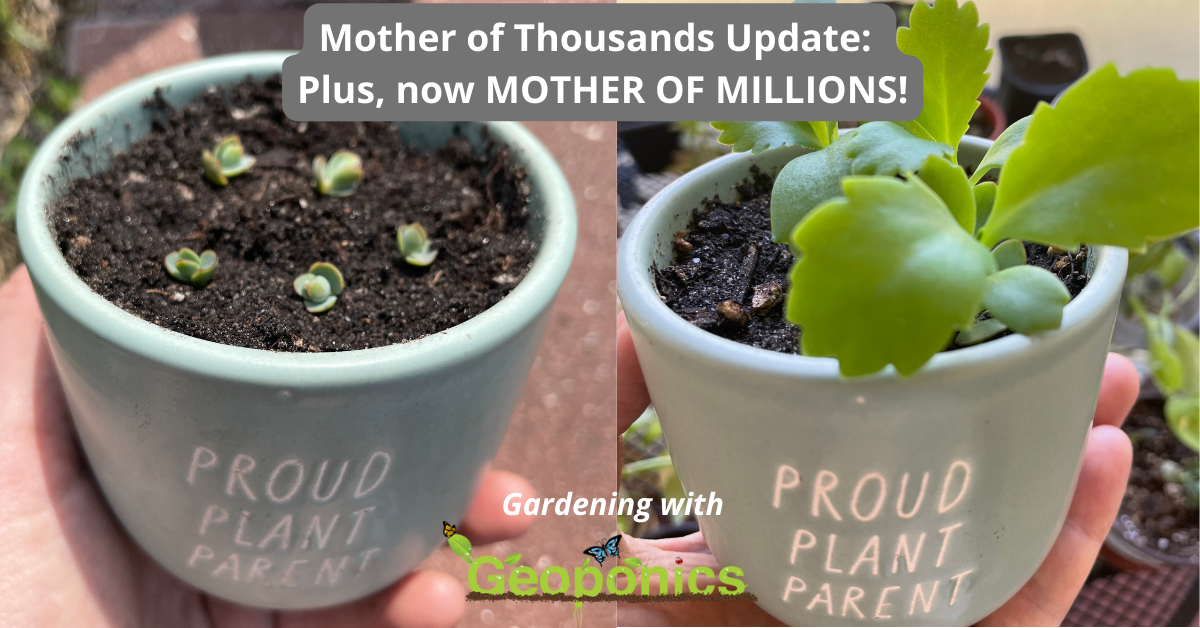It’s been almost a month since we shared with you one of the most easily propagated plants, Mother of Thousands. We wanted to share an update on how that is going. Plus, we introduce Mother of Millions. And, not only how to propagate these amazing plants, but also how to destroy them to avoid over-population.
What? Destroy them? Yes. Sadly, what makes them amazing also makes them invasive when planted outdoors.
Further, if you still do want to grow or share Mother of Thousands or Mother of Millions plants, beware that mother of thousands and mother of millions are not only invasive, but they’re also both toxic to dogs, cats and people.
So, why would anyone want to grow them? They’re amazing to watch.
We first met them in Mercy’s garden, where we were serving as foster gardeners for a few months. Now, Mercy is back. But we don’t have to succumb to the feeling of empty nest, or empty garden.
Because, we have the mother load of propagation happening.
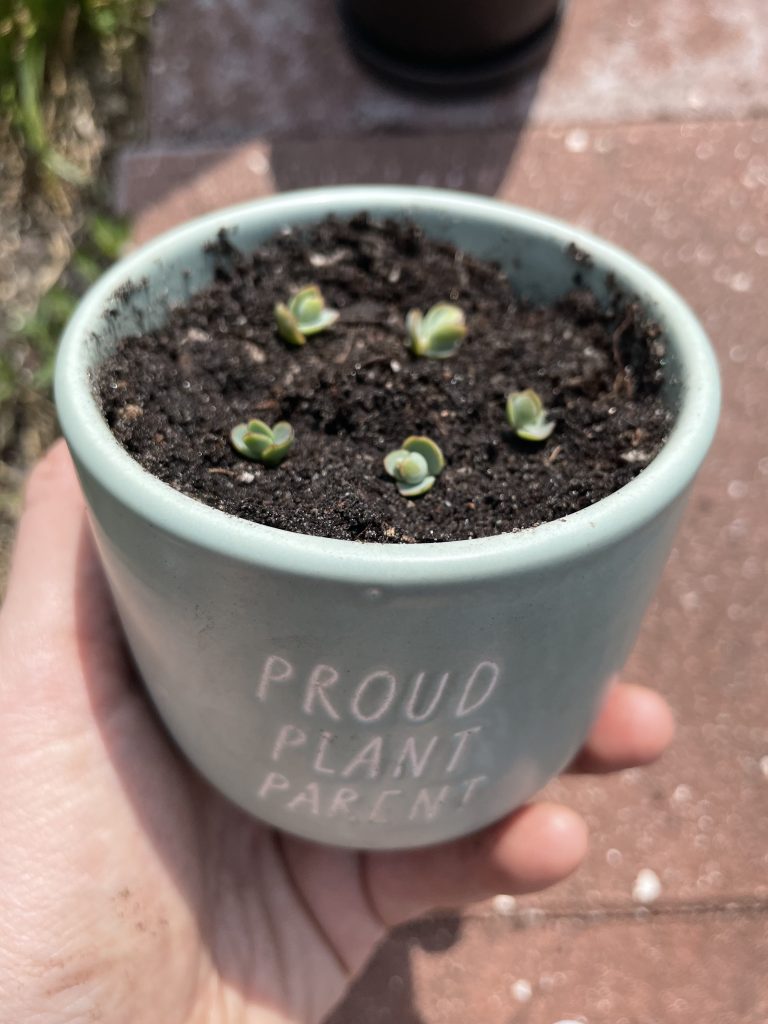
Mother of Thousands Update: The Ultimate Mother’s Day Plant
First, we’ve already given away tiny Mother of Thousands plants that began to take root to a couple close friends to enjoy in their homes. It’s a sweet little gift to share with someone, maybe even especially for someone who might be missing their mom. But keep in mind the type of plant this is in terms of toxicity. Plus, easily propagated also means easily invasive.
Nonetheless, as the plant kept reproducing, we planted several more of her plantlets in tiny pots. They make great Mother’s Day gifts to share with friends as we come across that holiday in a couple days. Any scraps that did not get planted, we have in an enclosed area near the fire pit. This will ensure we discard of it safely.
If you love to share a gift that has life to it, a living gift, sharing a small Mother of Thousands can be a great inexpensive way to do so. It’s more of a gift from the heart. And you can always make it fancier in a specific pot, if you like. But share the nature of this plant, so the new caretaker can be responsible and safe with it.
The Propagation Station: Adding a Mother of MILLIONS and More
Here you see we are propagating several plants, most of all Mother of Thousands, among other succulents. But also, in the mix is a new similar plant, Mother of Millions. This plant propagates a bit differently. However, the concept is the same. These two plant varieties make a lot more plants and quickly!
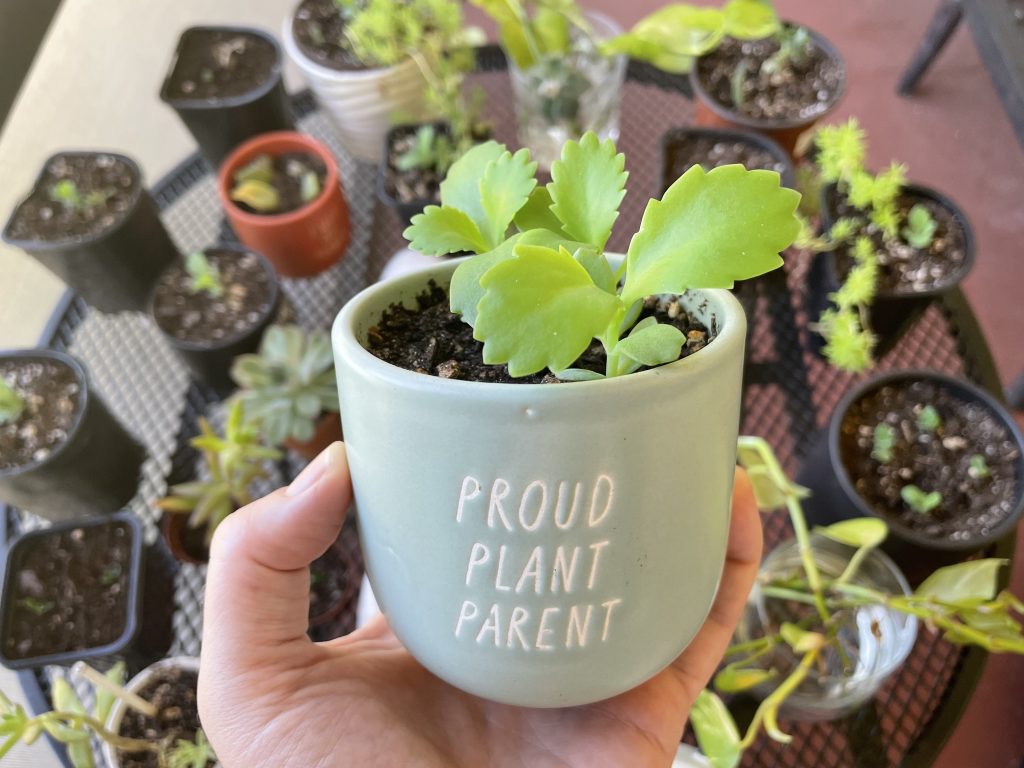
Invasive: From Endearing House Plant to Environmental Danger
We are speaking a bit highly of these two plants, thus far. However, they are both highly invasive. If you have a Mother of Thousands, be careful and responsible. The same is true of Mother of Millions. Do not plant outside in the ground where it will takeover and spread. If indoors, destroy and discard the plantlets. Mother of millions, like of Mother of Thousands, is toxic. Again, they are both poisonous to humans, livestock and pets.
How to Destroy Mother of Thousands or Mother of Millions
Wait, we just told you all the fun we are having making and sharing these plants. But, it’s important to only share the plant with people who understand their dangers.
So, do not plant in your garden (in the ground) and do not simply pitch a plant in the trash. Instead, burn the plant to destroy it. This may sound cruel but because Mother of Thousands and Mother of Millions are highly invasive, they limit biodiversity, which is really important for the health of the planet. (This is especially true in warm climates. They are native to Madagascar.)
If you do come across Mother of Thousands or Mother of Millions outside in the ground, do destroy it. You may take the plant inside if you are willing to care for its offspring– millions of them. But still, the remaining plant should be burned. In its place, put a new plant variety, such as one that will establish quickly. This will provide adequate competition to prevent Mother of Millions from cropping back up again. Because, as the name implies, Mother of Millions produces numerous seeds. And, these seeds can survive in the soil for years before germinating.
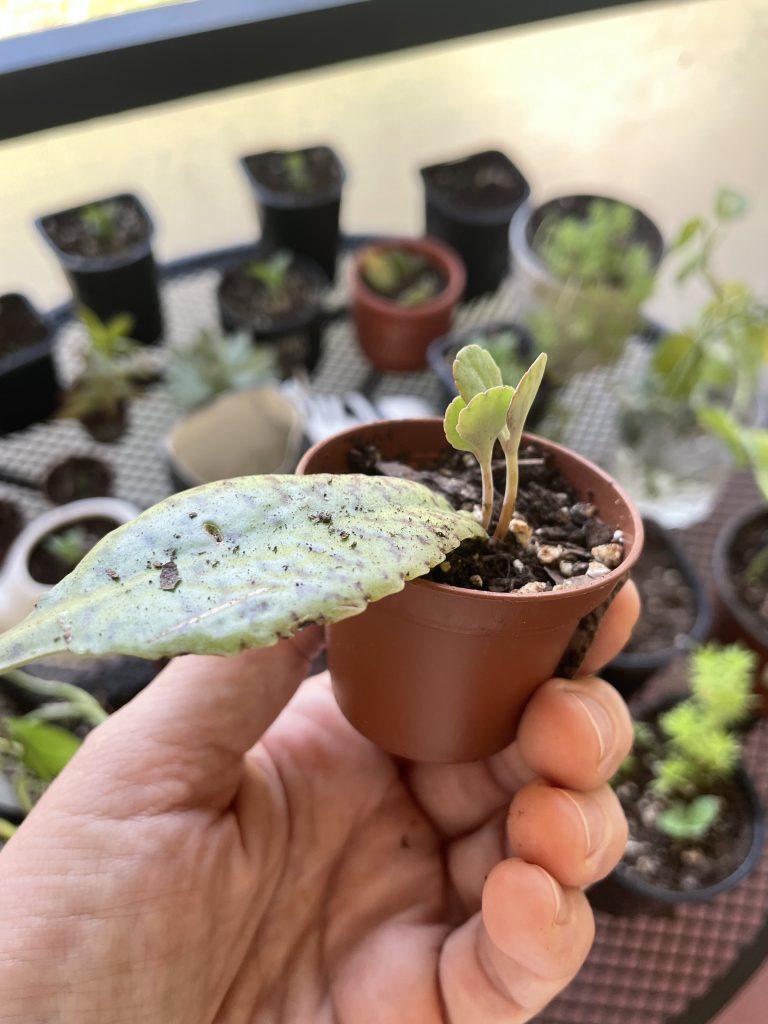
More Love for the Garden Lovers:
Affordable Environmentally Friendly Products for Healthy Plants
So, what do these mother plants have to do with Geoponics?
Mostly, if you love plants, like we do, you may be curious about all the different varieties. And, for your other, potentially more difficult to grow plants in your garden, lawn or landscape, we suggest:
- Soil Surfactants and wetting agents: Use Duration to easily help manage water in your soil. For potted plants, you can extend the time between waterings. Whether for one potted plant, a whole lawn, garden, golf course or farm, Duration can help maximize the water used. This leads to water conservation, more evenly moist soil, and healthier plants. Interested in learning more before you buy? Go to SoilSurfactant.com before heading to ShopGeoponics.com.
- SoilPlex: This OMRI listed soil conditioner for organic growing is favorite for the garden lover. It is well suited for lawns and golf courses as well. Most of all, SoilPlex, in the simplest terms, will minimize the need for chemical fertilizer and optimize nutrient uptake by plants. SoilPlex improves soil structure. It’s a science of humic and fulvic acids and the necessary carbon source. It’s like having an easy to use, readily made, organic liquid compost. Learn more about SoilPlex and buy here.
- FertaFlow: Organic cold-pressed, whole fish fertilizer. FertaFlow is also OMRI listed for organic growing. It’s awesome as a fertilizer and is blows fish emulsions out of the water because emulsions are just the leftovers of a fish after everything else is stripped and sold. FertaFlow retains the whole fish nutrition and even more so with cold pressed processing versus high heat or even chemical processing. Buy FertaFlow.
- Carbotein: For people who love buds and high yields, Carbotein will knock your socks off. Carbotein is made of plants for plants. It will increase flowering, budding and yields of fruits and vegetables. It will thicken a lawn to make it more lush. Buy Carbotein.
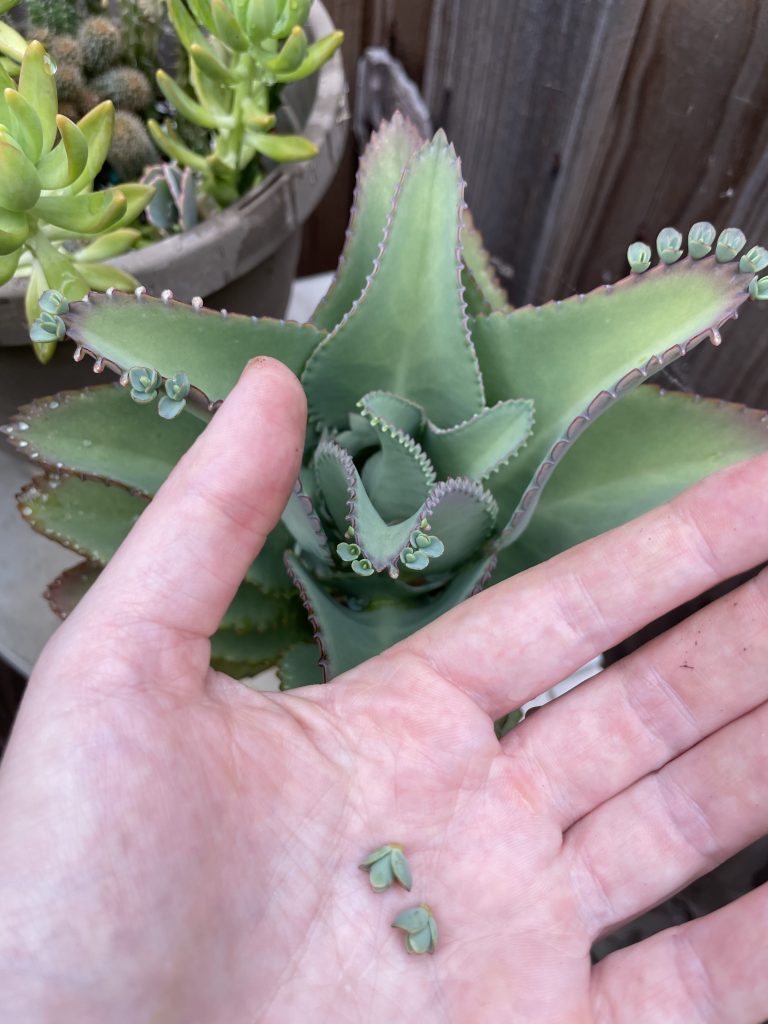
Happy Gardening!
For a look back at the first blog from Mercy’s Garden: Mother of Thousands Story and Propagation, click here.


